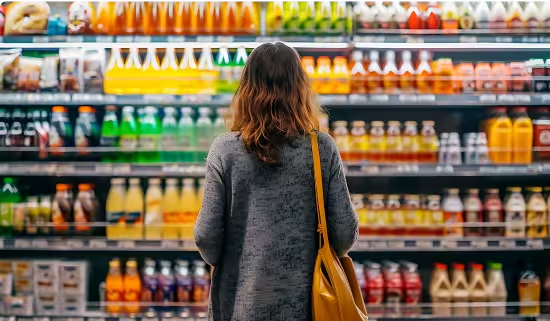
The Baby Food Sector in Hungary, 2018
Region:Europe
Product Code:BF211MR
March 2018
121
About the Report
The Baby Food Sector in Hungary, 2018
Summary
The Baby Food Sector in Hungary, 2018, is an analytical report by GlobalData which provides extensive and highly detailed current and future market trends in the Hungarian market.
Hungary's birth rate remains among the lowest in Europe. Demand for baby food has held up well, although much of the growth has come in the last four years, boosted by higher numbers of births and economic recovery. The high price of baby food has deterred higher consumption levels. Several manufacturers produce baby food within the country, including Hipp, and local manufacturer Univer. Together, Danone, Hipp, and Nestle accounted for 63% of value in 2017. Danone and Hipp are active in all categories, and Nestle is absent only from drinks. Danone is the clear leader in milks and cereals, while Hipp leads the wet meals and drinks categories. Other players tend to focus on one or two areas. Cereals, wet meals, and drinks are now largely sold in food outlets (taking 71% of sales) and drugstores (26% of sales), with the latter gaining ground. Since the ending of the monopoly on the sale of first-stage formulae in pharmacies, both food outlets and drugstores have increased their share of sales, and 63% of milks are now sold via non?pharmacy outlets. Growth prospects for the period up to 2023 are relatively good: real GDP growth is forecast to remain at 2%-3% per year. However, political instability threatens to undermine this. The number of live births is expected to continue to increase gently. As a result, total volume is predicted to grow.
Scope
- New legislation governing the promotion of infant formula and follow-on formula took effect on July 1, 2016. This means that sales representatives must obtain an ID issued by the National Institute of Pharmacy and Nutrition (NIPN) if they want to meet with healthcare professionals, including pharmacists, to promote their products. Companies or sales representatives must also comply with registration obligations before they are allowed to conduct promotional activities directed at healthcare professionals.
- Sales of first-stage milks have been adversely impacted by an increase in non-exclusive breastfeeding and a fall in the number of births up to 2013 and as a result hold less than 20% of category value.
- There is no official baby food production data available in Hungary, although several manufacturers produce baby food within the country. These include Hipp, which manufactures most of its cereals, wet meals, and juices in Hungary, as well as local manufacturers, principally Univer.
- Danone is the clear category leader of Cereals & Dry Meals, with a 46.5% value share in 2017, followed by Nestle, Humana Milchunion & Hipp.
Reasons to buy
- Evaluate important changes in consumer behavior and identify profitable markets and areas for product innovation.
- Analyse current and forecast behavior trends in each category to identify the best opportunities to exploit.
- Detailed understanding of consumption by individual product categories in order to align your sales and marketing efforts with the latest trends in the market.
- Investigates which categories are performing the best and how this is changing market dynamics.
Scope of the Report
Products
Companies
Table of Contents
Table of Contents
Introduction
Executive Summary
Definations
Background to the Market
Birth: Live Birth Rates
The Consumer
Socio-Demographic Trends
Working Women
Regulations
Breastfeeding Trends
Market Overview
Sector Overview
Manufacturers Shares
CategoryAnalysis
Baby Milks
Baby Cereals & Dry Meals
Baby Meals & Others
Baby Drinks
Baby Finger Foods
Production and trade
Production
Imports
Exports
Company profiles
Numil Hungary Kf
Hipp Verkaufsburo Budapest
Nestle Hungaria Kft
Univer Product Zrt
Humana
Distribution
Baby Food Retailing
Economic background
Key Macroeconomic Forecasts
Prospects and forecasts
Birth & Population Projections
Forecast Overview
Future Trends
Appendix
Research Methodology
Why Buy From Us?

What makes us stand out is that our consultants follows Robust, Refine and Result (RRR) methodology. i.e. Robust for clear definitions, approaches and sanity checking, Refine for differentiating respondents facts and opinions and Result for presenting data with story

We have set a benchmark in the industry by offering our clients with syndicated and customized market research reports featuring coverage of entire market as well as meticulous research and analyst insights.

While we don't replace traditional research, we flip the method upside down. Our dual approach of Top Bottom & Bottom Top ensures quality deliverable by not just verifying company fundamentals but also looking at the sector and macroeconomic factors.

With one step in the future, our research team constantly tries to show you the bigger picture. We help with some of the tough questions you may encounter along the way: How is the industry positioned? Best marketing channel? KPI's of competitors? By aligning every element, we help maximize success.

Our report gives you instant access to the answers and sources that other companies might choose to hide. We elaborate each steps of research methodology we have used and showcase you the sample size to earn your trust.

If you need any support, we are here! We pride ourselves on universe strength, data quality, and quick, friendly, and professional service.















